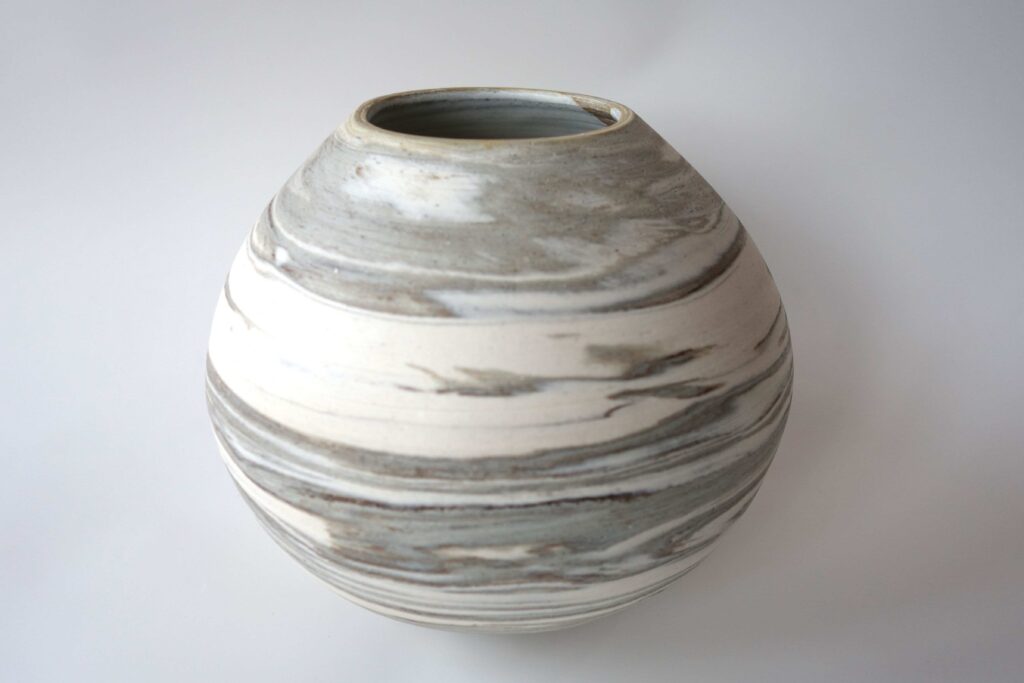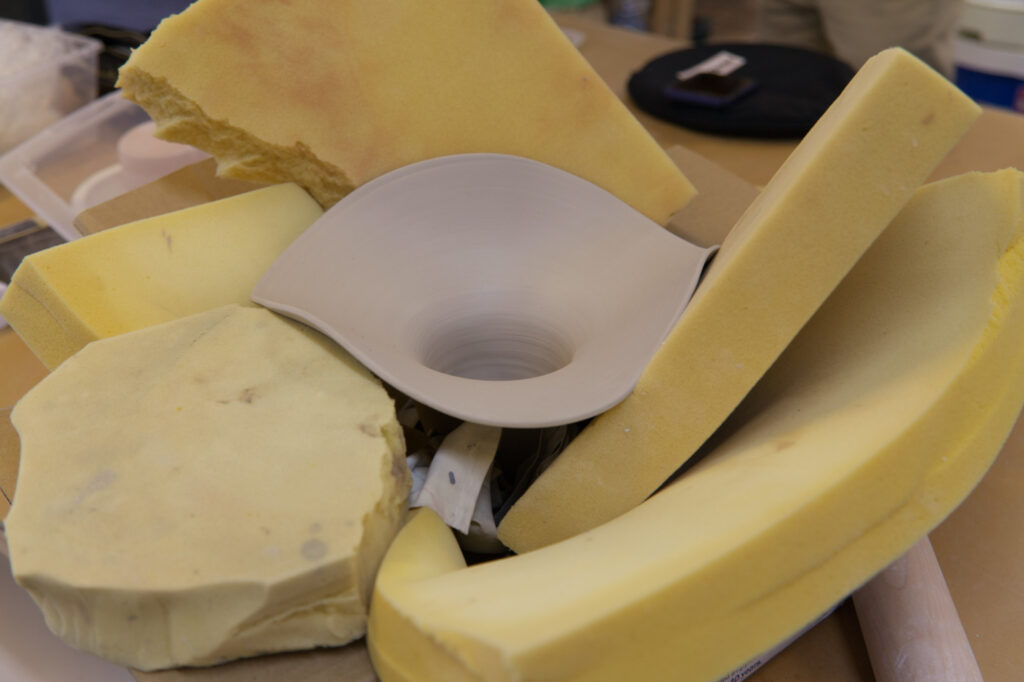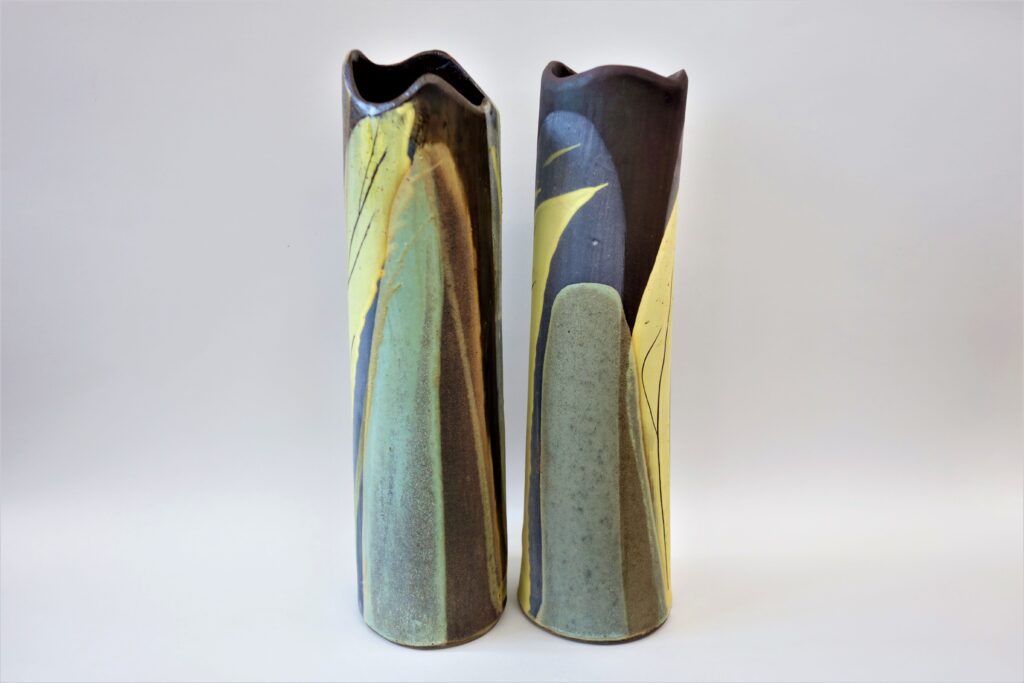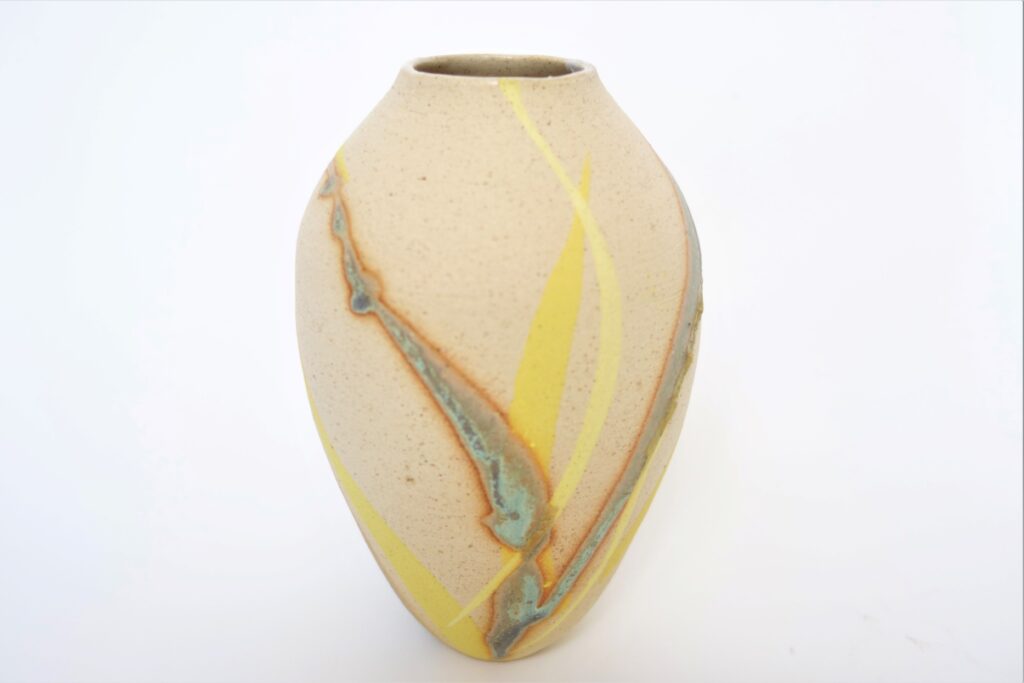I start by wedging a porcelaneous clay, then insert torn slices and chunks of black clay here and there. At the wheel, I work the clay until it is carefully centered, before pulling up the walls and opening out the belly. The clay looks a little dark, and messy.
I leave it to dry till the next day, either in a damp box, or covered in plastic (it’s winter now in Canada, and with the heat on, the clay would otherwise dry far too quickly).
The magic comes the next day, when the time comes to trim the piece. As the surface clay peels away, little by little the swirling colour beneath is revealed.
Height: 15 cm; diameter: 15 cm. White stoneware, and black stoneware; fired to cone 6, in oxidation.






















